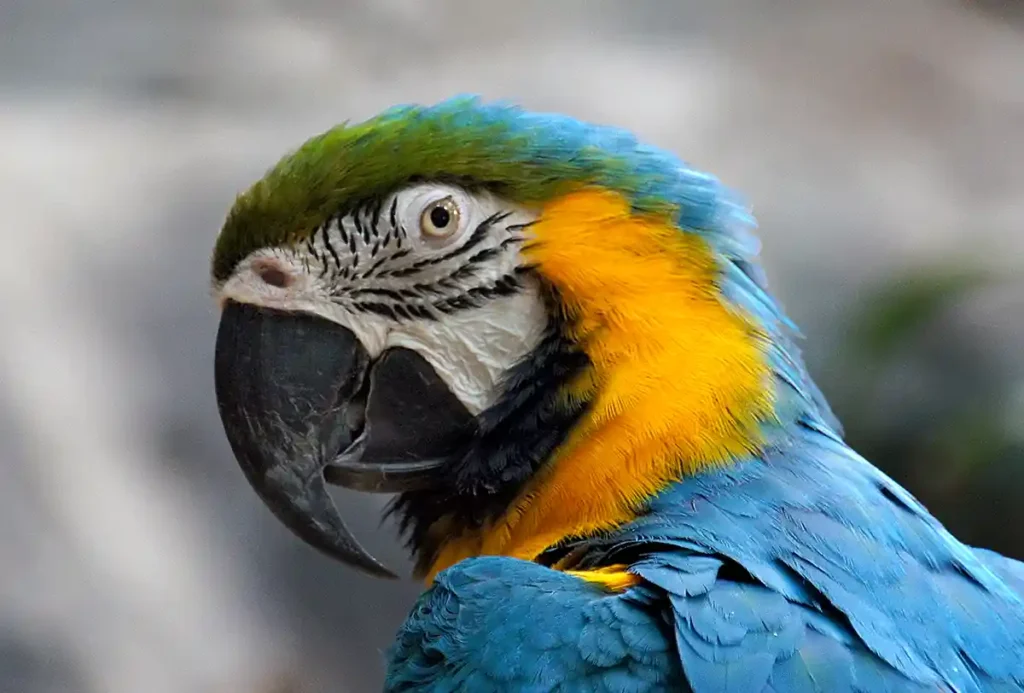
Welcome to the vibrant world of the Blue-and-Yellow Macaw (scientific name: Ara ararauna), a member of the parrot family that never fails to catch your eye with its radiant hues. Like a splash of sunlight against the sky, this blue-and-gold macaw bird is a sight to behold in the wild. Native to the verdant expanses of South America, these birds are as intriguing as they are beautiful. So, let’s dive in to know more about this fascinating creature.
The Striking Appearance of the Blue-and-Yellow Macaw
A blue-and-yellow parrot, imagine that! The bird’s gradient hues of cobalt blue and vivid gold make it instantly recognizable. Their forehead feathers are green, gradually blending into a sea of blue that covers their back, wings, and tail feathers. The chest and underparts, in contrast, boast a warm, sunlit gold.
Blue-and-yellow macaws are among the largest parrot species, boasting a remarkable wing span that can reach up to 41 to 45 inches. The length from the top of their head to the tip of their tail feathers can be between 30 to 36 inches. Males and females are similar in appearance, with sleek black beaks and notable white facial patches adorned with fine black feather lines.
Compared to other parrots and macaws, the blue-and-yellow macaw stands out for its distinct and vibrant coloration. While the Scarlet Macaw boasts a fiery palette of red, yellow, and blue, and Green-winged Macaws display a more verdant ensemble, neither quite matches the striking contrast of the blue-and-yellow macaw’s cobalt and gold. Hyacinth Macaws, on the other hand, known as the largest macaws, exhibit a uniform deep blue and a more robust beak, yet lack the dual-tone color spectacle of the blue-and-yellow variant. Furthermore, the blue-and-yellow macaw’s unique white facial patch, intricately lined with delicate black feathers, sets it apart from many parrot species that often have fully feathered faces or bare, colorfully tinted eye rings.
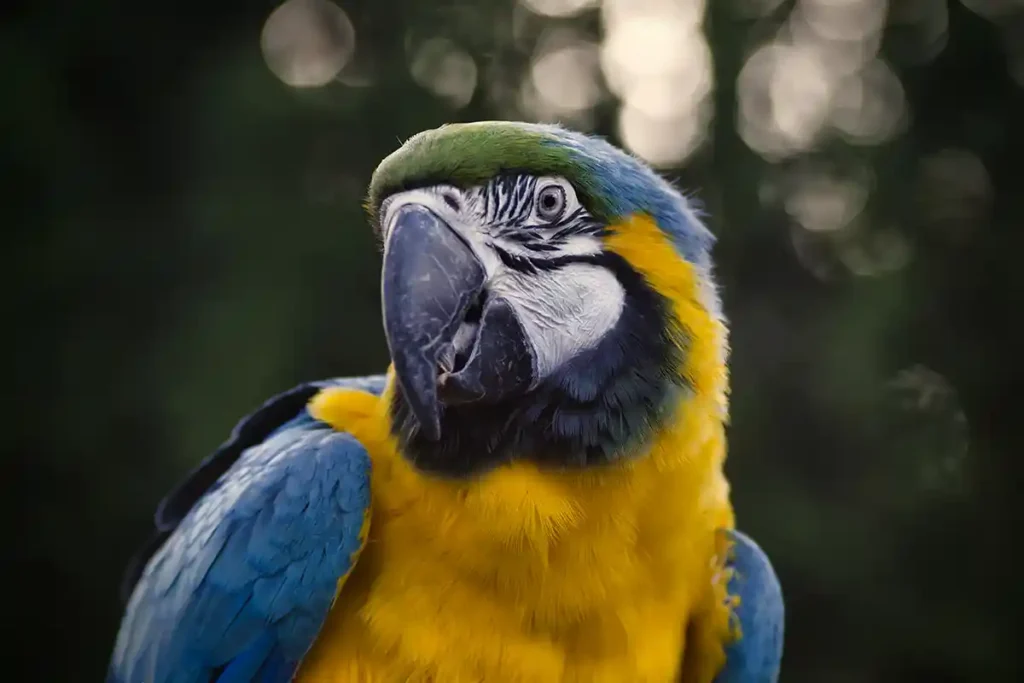
Habitat and Distribution of the Blue-and-Yellow Macaw
One may wonder, “where are blue-and-gold macaws from?” This breathtaking bird calls the warm and tropical regions of South America its home. It’s found in the rainforests, savannas, and woodlands, with a large distribution area spanning across countries like Brazil, Bolivia, Colombia, Venezuela, Paraguay, and Panama.
In addition to their South American range, some macaws have expanded to Central America, creating a mesmerizing spectacle in the skies with their bright hues and powerful flights. These macaw species such as the Scarlet Macaw and Military Macaw have adapted well to the diverse environments, from the humid rainforests to the dry savannas. When you see one of these birds, the first thing you notice is their powerful beak, capable of crushing hard nutshells with ease.
The underside of their tail and wings flash vibrant yellow, contrasting sharply with their blue feathers. This distinctive color pattern makes them one of the most visually stunning parrots and a popular pet among bird lovers. Despite their beauty, these macaws much more than just pretty faces. These intelligent animals play a crucial role in the ecosystem of their native habitats, especially in Brazil, where they help in seed dispersal, contributing to the rich biodiversity of the rainforests.
Adaptation to the Forest Canopy of the macaw
The forest canopy serves as an ideal habitat for these birds. Their bright colors effortlessly blend with the green leaves and blue sky, providing a natural camouflage against predators. The macaws navigate through the tall trees of the rainforests, using their powerful beaks and zygodactyl feet (two toes pointing forward and two backward) to climb, swing, and hang on branches.
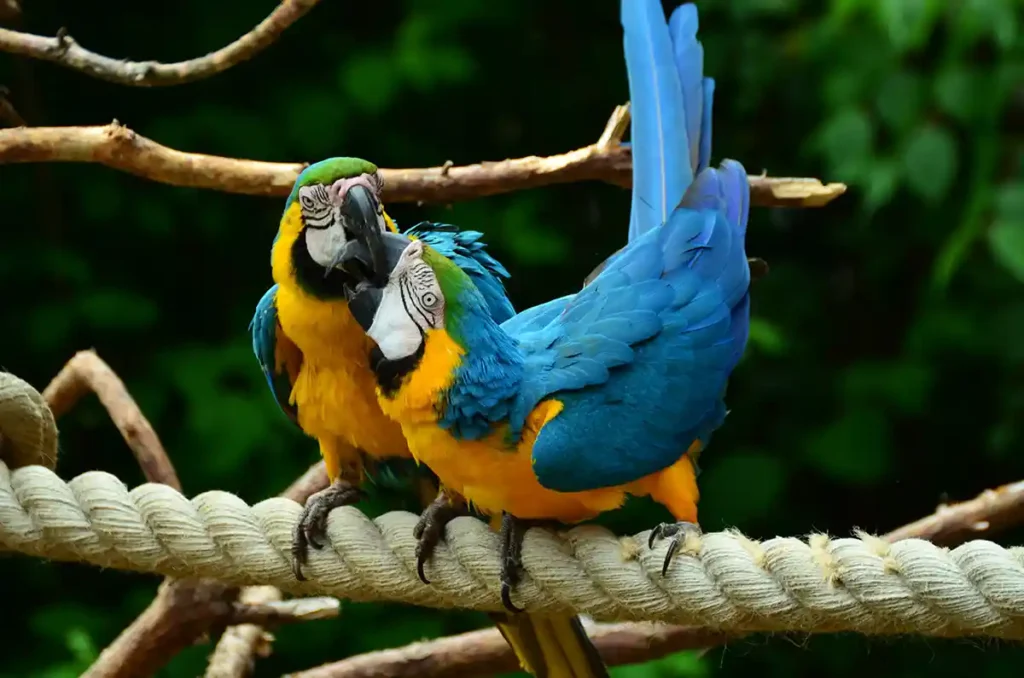
Social Behavior and Communication of the Blue-and-Gold Macaw
Blue-and-yellow macaws are social animals that thrive on interaction. They are often seen in pairs or small family groups in the wild. A fascinating aspect of their behavior is their monogamous nature. Once they find a partner, macaws usually pair for life. These pairs can often be seen flying close together, their tails and wings almost touching.
Communication plays a vital role in the life of a blue-and-yellow macaw. Their loud vocalizations, or flock calls, echo through the forests, reinforcing bonds between birds and helping locate each other over large distances. Each macaw’s calls are unique, much like a human’s voice!
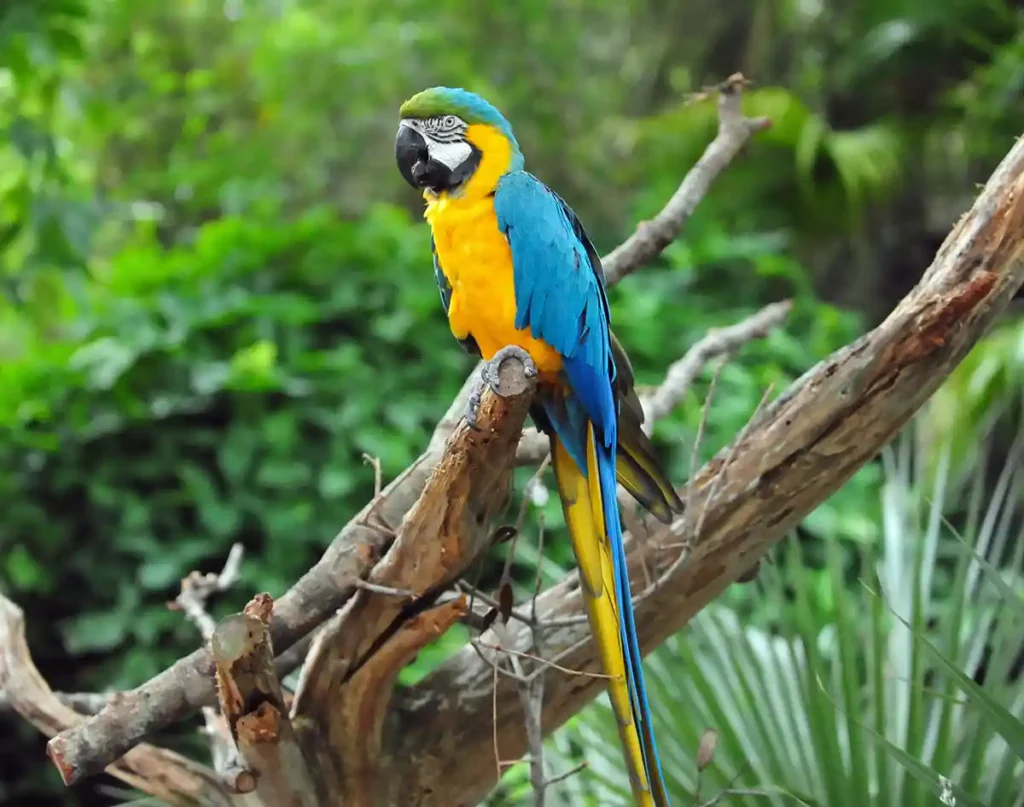
Macaws Diet and Feeding Habits
An integral part of understanding the life of a blue-and-yellow macaw is exploring its diet. These birds primarily feed on a variety of seeds, nuts, fruits, and green vegetable matter. They’re also known to visit mineral-rich clay licks, which are exposed riverbanks or cliffs, to consume clay – a behavior thought to neutralize toxins in their diet and provide essential minerals.
Feeding time for a blue-and-yellow macaw is as much about survival as it is about social interaction. They usually forage in the early morning and late afternoon, often in large noisy flocks. Using their robust beaks, they expertly crack open hard-shelled nuts and seeds. Their muscular tongues aid in manipulating food and extracting the nutritious parts.
Breeding and Lifespan
Blue-and-yellow macaws usually breed between January and July. After mating, the female lays typically two to three eggs in a tree cavity, which she incubates for about 24 to 28 days. Both parents participate in raising the chicks, which fledge approximately 90 to 100 days after hatching.
Longevity
Blue-and-yellow macaws are known for their remarkable lifespan. In the wild, they can live up to 60 years, and under human care, they have been known to reach 80 years or more, given the right conditions and care.
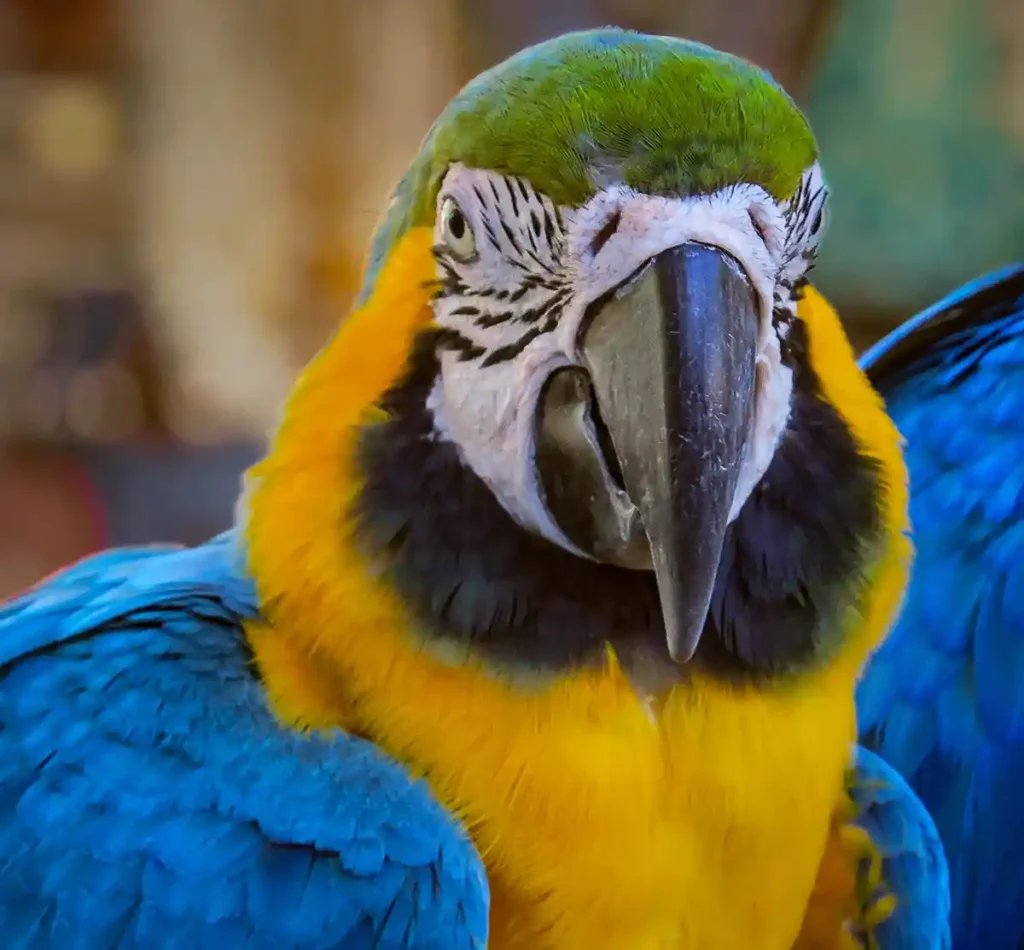
Conservation Status and Threats
As of my knowledge cut-off in September 2021, the blue-and-yellow macaw is listed as “Least Concern” on the IUCN Red List of Threatened Species, thanks to their wide distribution and relatively stable population. However, local population declines have been reported due to habitat destruction and illegal pet trade.
Deforestation for agriculture and urbanization, along with hunting and illegal pet trade, pose significant threats to these magnificent birds. Some macaws are also killed for their stunning feathers. Conservation efforts include habitat protection, regulation of trade, and captive breeding programs.
Blue-and-Yellow Macaws as Pets
With their vibrant colors, intelligence, and social nature, blue-and-yellow macaws have a high appeal as pets. They are known for their playful personality and the ability to mimic human speech. However, they require a lot of care, including a balanced diet, plenty of exercise, and social interaction. Potential owners should be prepared for a long-term commitment, considering the bird’s long lifespan.
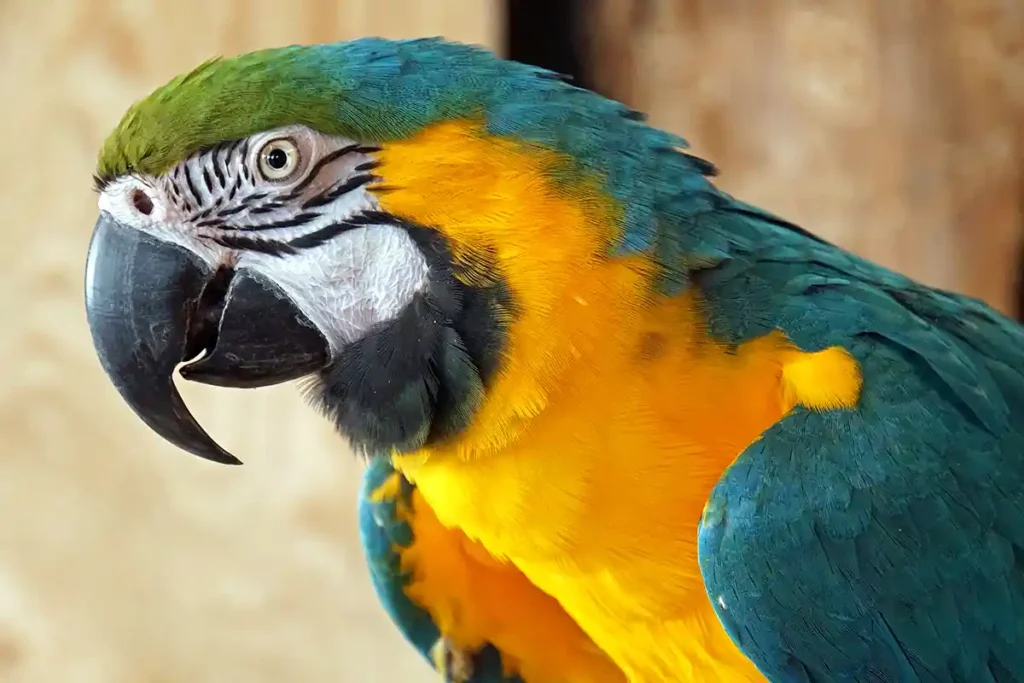
Conclusion
The blue-and-yellow macaw is indeed a marvel of the animal kingdom. Its radiant tones, intelligent and social nature, and impressive longevity make it a fascinating creature to study and observe. As we continue to explore and understand these birds, let’s also remember the importance of preserving their natural habitats and protecting them from threats. These steps are crucial in ensuring that future generations also get the chance to witness the beauty and intelligence of these magnificent creatures.
